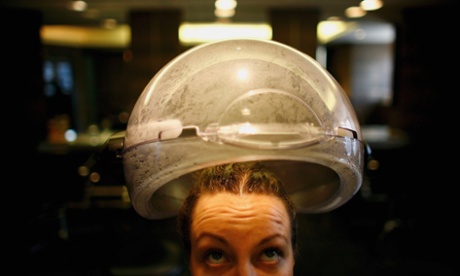
Because I spend a lot of time researching and writing about chemicals in consumer products, I’ve also become the go-to resource on such information for friends and family members. I get a lot of urgent text messages and calls from salons, pharmacies, and grocery stores.
“How bad is the Brazilian Blowout (or blow dry), really? It’s the only thing that works for my hair and I don’t want to give it up.”
“What shampoo should I get if I’m pregnant and worried about chemicals?”
“Should I stop dying my hair while I’m pregnant?”
And while I do have answers to these questions (the Brazilian Blowout is really bad, don’t do it; look for organic shampoo packaged in glass; and it’s probably best not to dye your hair when pregnant), even after reading hundreds of studies and speaking with as many experts, I’m still gripped by indecision when I go to the store, too.
Is it more important to avoid phthalates or sulfates? Does “organic” mean anything on a shampoo bottle? What the heck is sodium laureth sulfate, anyway, and why is it in almost every hair product?
It’s difficult even for the most knowledgeable of consumers to decipher labels and navigate their way through the chemical soup that is the consumer-products industry.
It’s important to get a handle on some of the more commonly used chemicals not only to avoid those that are potentially harmful, but also to diffuse any sort of unjustified chemophobia. There’s no use in panicking about the ingredients in your shampoo, for example, if it’s really just a combination of water, salt, essential oils and plant extracts.
Unfortunately, it’s not enough just to know how to read product labels. Many consumer products are only loosely regulated if at all, and current US labeling requirements leave out some potentially toxic chemicals.
Phthalates, for example, are often hiding in the generic ingredient “fragrance” on shampoo labels. Environmental health advocates are hopeful that the US Toxic Substances Control Act, which governs the use of chemicals in consumer products, will finally be updated this year – it hasn’t been touched for nearly 40 years, during which time several new chemicals have made their way onto store shelves and we’ve learned a lot more about the health impacts of various chemicals and chemical groups – but there’s no guarantee that it will be or, if it is, that it will offer consumers any additional protection.
Some advocates are even concerned that an updated law will leave consumers more vulnerable, as it could preempt state law, rendering the existing 169 chemical regulation laws in 35 states null and void (not to mention the 71 chemical regulation bills currently being considered across 24 states).
“People are so worried and they always ask: what can I do?” says Robin Whyatt, professor of environmental health sciences and deputy director of the Columbia Center for Children’s Environmental Health at the Mailman School. “I always try to have some simple tips for reducing exposure because I know the level of anxiety people have and then it gets so much worse if you can’t tell them what to do. But this is why we need regulation. We really don’t know enough to tell anyone conclusively how to avoid [chemical-related] health risks. We know doing certain things will reduce your exposure but we don’t know by how much and we don’t know what it needs to be reduced to.”
While we wait for regulation, which will be slow in coming (even if the TSCA reform bill expected this spring passes, it could take the EPA several years to implement any new regulations), consumers are left with two options: bone up on chemistry to better avoid or reduce exposure to certain chemicals or types of chemicals, and ask retailers to stock healthy products.
Retailers have a lot of power to change this,” says Bruce Akers, a green chemist who works with various personal care product companies. “Just look at Whole Foods as a case study: theirs was the first retail-based standard and it has changed the natural beauty industry. Any time I work with a company, they say the product has to be formulated according to the Whole Foods standard.”
The same should happen with the Walmart and Target standards, released in late 2013, which aim to move suppliers away from potentially harmful chemicals, he said. “They can’t help but bring green chemistry to the mainstream.”
Akers said he’d love to get to the point where consumers don’t have to know or care what’s in the products they’re buying. “Consumers have too many other things to worry about to spend a lot of time worrying about ingredients,” he said.

